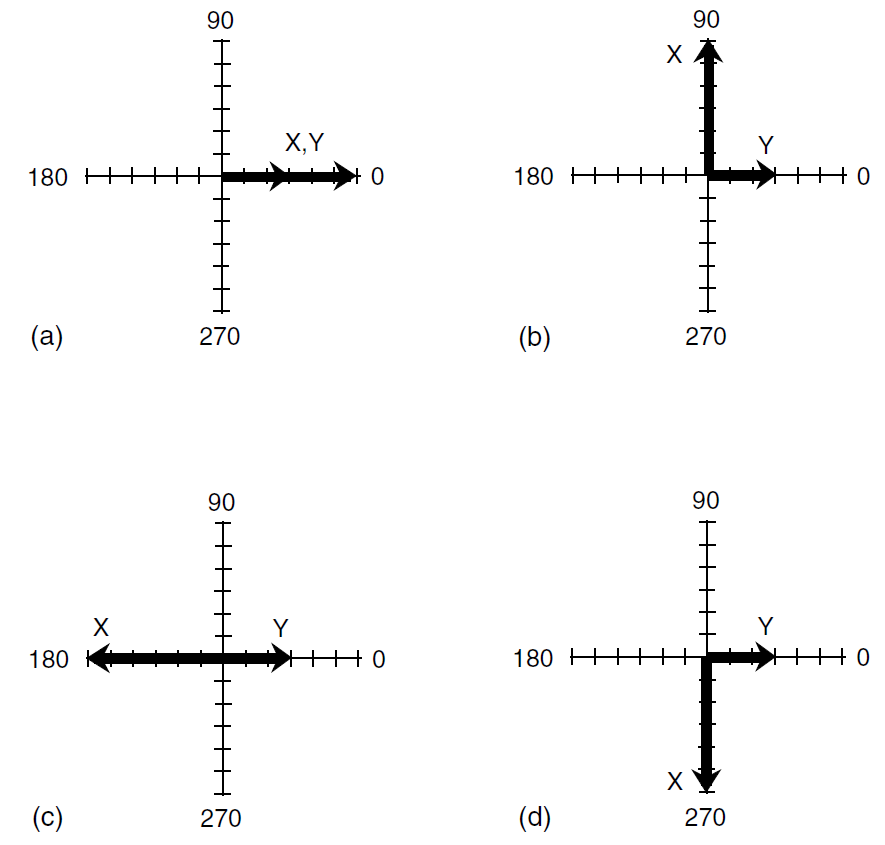
VECTOR REPRESENTATIONS OF PHASE
 المؤلف:
S. Gibilisco
المؤلف:
S. Gibilisco
 المصدر:
Physics Demystified
المصدر:
Physics Demystified
 الجزء والصفحة:
339
الجزء والصفحة:
339
 7-10-2020
7-10-2020
 2160
2160
VECTOR REPRESENTATIONS OF PHASE
If a sine wave X is leading a sine wave Y by x degrees, then the two waves can be drawn as vectors, with vector X oriented x degrees counterclockwise from vector Y. If wave X lags Y by y degrees, then X is oriented y degrees clockwise from Y. If two waves are in phase, their vectors overlap (line up). If they are in phase opposition, they point in exactly opposite directions. Figure 1 shows four phase relationships between waves X and Y. Wave X always has twice the amplitude of wave Y, so vector X is always twice as long as vector Y. In part a, wave X is in phase with wave Y. In part b, wave X leads wave Y by 90°. In part c, waves X and Y are 180° opposite in phase. In part d, wave X lags wave Y by 90°.
In all cases, the vectors rotate counterclockwise at the rate of one complete circle per wave cycle. Mathematically, a sine wave is a vector that goes around and around, just like the ball goes around and around your head when you put it on a string and whirl it.
In a sine wave, the vector magnitude stays the same at all times. If the waveform is not sinusoidal, the vector magnitude is greater in some directions than in others. As you can guess, there exist an infinite number of variations on this theme, and some of them can get complicated.

Fig. 1. Vector representations of phase. (a) waves X and Y are in phase; (b) wave X leads wave Y by 90 degrees; (c) waves X and Y are in phase opposition; (d) wave X lags wave Y by 90 degrees.
 الاكثر قراءة في الكهربائية
الاكثر قراءة في الكهربائية
 اخر الاخبار
اخر الاخبار
اخبار العتبة العباسية المقدسة


